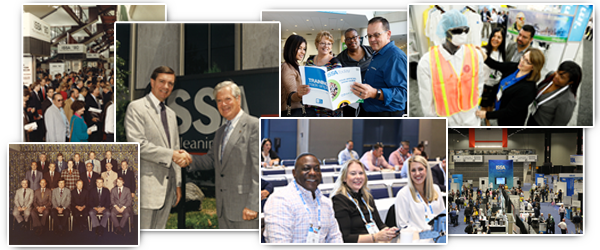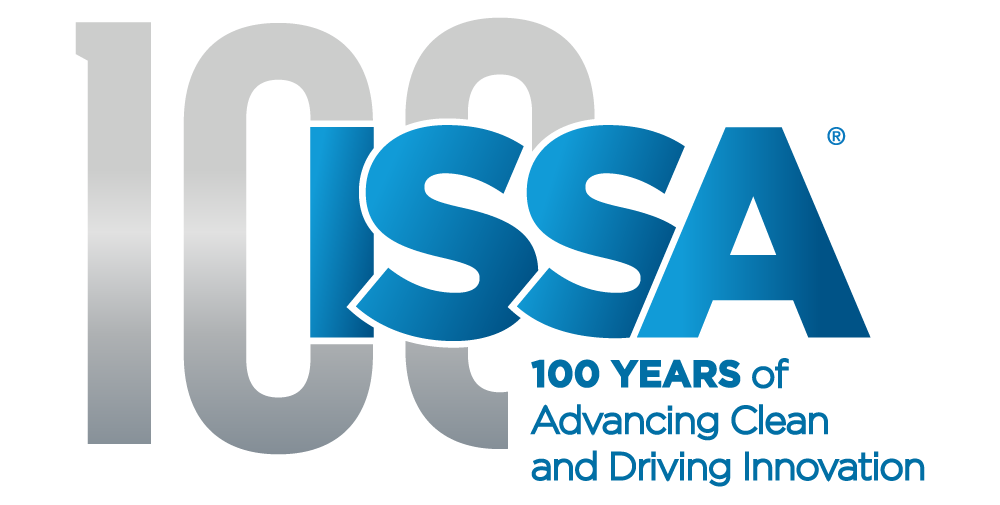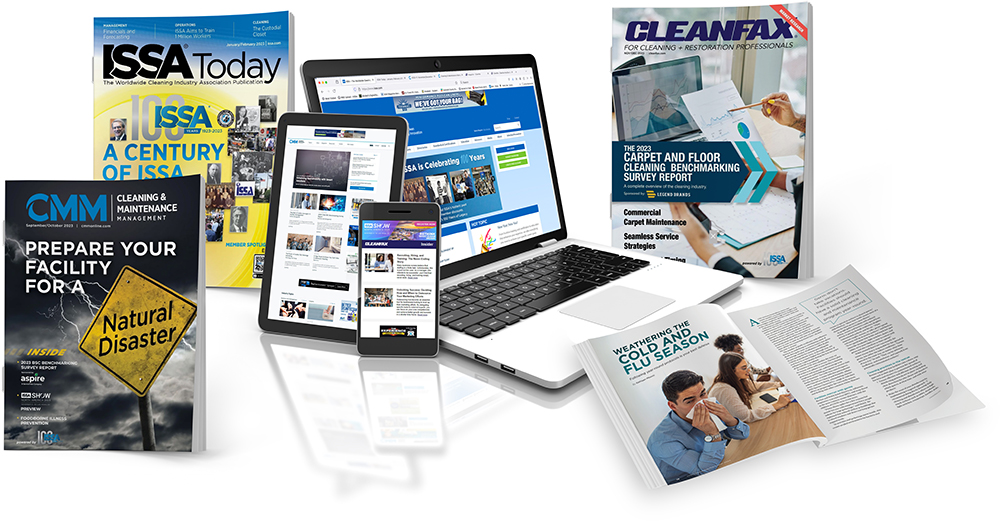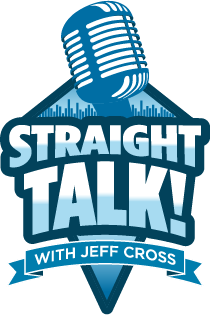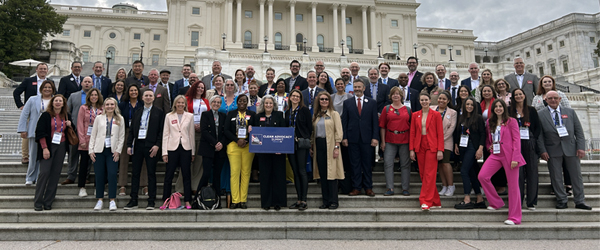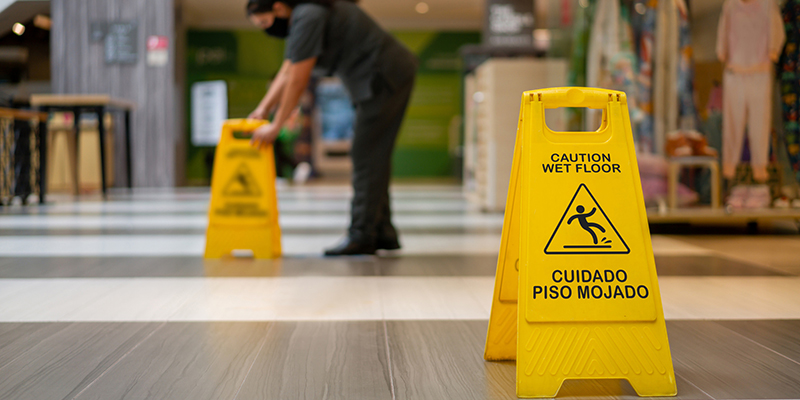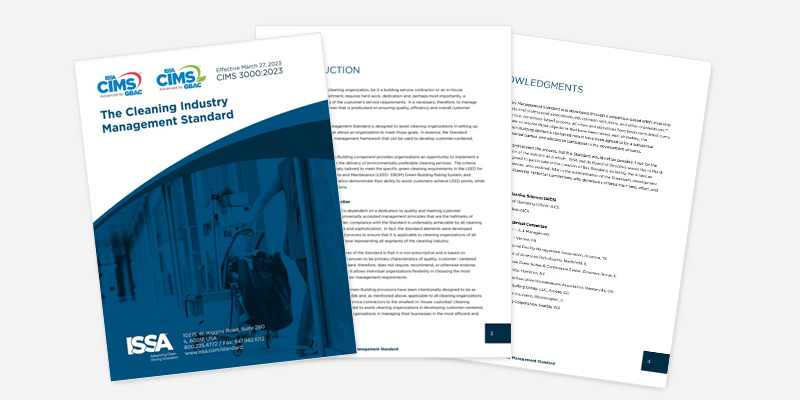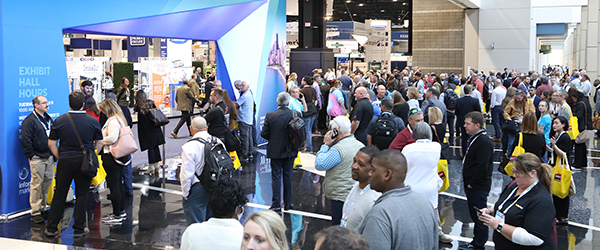Self-Cleaning Success Story

Inspiration for innovation can strike at any time or place, be it during a corporate brainstorming session, during the drive home from work, as part of a team meeting, or even—in the case of NanoTouch Materials—over a simple lunch at a local restaurant.
“My business partner and I were sitting in a restaurant one day having lunch, discussing some of the materials we’ve been researching,” Mark Sisson, NanoTouch co-founder, says. “We saw a mom with a toddler, and she’s washing the table down with wipes and then we see someone else using hand sanitizer, then we watch a worker wiping down a table with a dirty dish rag which was just nasty. We knew people were concerned with the idea of cleanliness and hygiene, and yet they’re using all these different things. We asked each other if we could create something that put clean right where and when people need it?”
Sisson and his partner, Dennis Hackemeyer, continued that lunchtime conversation back at their workplace, the Center for Advanced Engineering and Research in Forest, VA. Over the course of several years of research and development, they formulated a self-cleaning surface known as NanoSeptic. Excited to share their newly developed technology, Sisson and his team began to look for ways to bring it to market.
Reaching the Right Market
“When we first invented self-cleaning surfaces, part of the reason we did so was to help hospitals combat the challenges they were facing from health care-associated infections—or HAIs.” Sisson says. “At first, we figured the health care industry would be a no-brainer for us to get into, but we found very quickly that hospitals are risk adverse and want clinical trials and evidence-based medicine, even when it comes down to cleaning issues. It was very difficult to even get our foot in the door for meetings, even though we felt the benefits were obvious. We started to think about other industries that would be interested in self-cleaning surfaces and that’s how we came to the commercial cleaning industry.”
Not knowing much about the cleaning industry, the NanoTouch team started out by simply joining ISSA in 2014. The company spent two years learning about the industry from the association and attending the annual ISSA trade show. Two years later, feeling confident that this was the best place to bring its NanoSeptic self-cleaning surfaces to market, NanoTouch exhibited at the show for its first time, and more importantly, entered the ISSA Innovation Awards Program. That year, the company took home the ISSA Innovation Award for the Cleaning Supplies category. In 2017, it again earned a top spot, this time in the Cleaning Agent category for a self-cleaning surface aimed at the travel and hospitality industry.
The popular and long-running ISSA Innovation Award program serves as a platform for exhibitors at the ISSA Show North America to unveil their latest product and service developments, which are voted on by distributors, building service contractors, residential cleaning contractors, and in-house service providers prior to the show. Entries are organized into five categories—Cleaning Agents, Dispensers, Equipment, Services and Technology, and Supplies and Accessories. Each entry vies to earn an ISSA Innovation Category Award as well as the top honor—the ISSA Innovation of the Year Award.
“Winning the ISSA Innovation Award in 2016, and then again the next year, was huge for us,” Sisson says. “Obviously, when you win an award from a major reputable association such as ISSA, it adds legitimacy to your product no matter what the market. It made it so much easier to pitch our product. And in addition to that legitimacy, the win also brought a type of awareness to the cleaning industry. We started having really good conversations about having a value-added service model. ISSA members are generally knowledgeable business people who are serious about their industry, and they saw right away how our products could help improve their service offerings.”
Winning Recognition
According to Sisson, after winning its first award, NanoTouch demonstrated to the cleaning industry that its self-cleaning services could be used by facility service providers as an add-on service. “It was a big win for our company when the other ISSA members began embracing us,” he says. “We started engaging with decision-makers on how they could sell the installation and maintenance of our products to their customers. This allowed cleaning services to generate new revenue at a higher margin, all while helping to bring our products to market.”
Winning a second award in 2017 for a new product and application opened up even more avenues for NanoTouch. “We tweaked NanoSeptic for the U.S. Transportation Security Administration’s (TSA) travel bins commonly used at most airports,” Sisson says. “Then, based on the recognition we received from both ISSA and the TSA, we found demand for the self-cleaning bins in a whole host of other secure facilities. Now it is being used in nuclear power plants, courthouses, and other secure government facilities. At the time we developed it, we never thought one product would have so much reach outside of the travel industry.”
Feedback Fuels Future
Even after winning the two awards and expanding its product reach further than they initially imagined, Sisson and his team are far from resting on their laurels. Ideas for applying their self-cleaning surfaces continue to flow in. “Most of our inspiration for new product development comes from the need to address a very specific market need,” Sisson says. “For example, ever since we started we’ve been asked for a self-cleaning film for touch screens. We initially avoided going this route due to the varying sizes and shapes of cellphones. But not too long ago, I was reading an article on how the dirtiest places in an airport are self-check-in kiosk touch screens. We recently launched a clear film that can be applied to these kiosks. This was a perfect example of our internal brainstorming combining with external feedback to develop a business application that addresses a market need.”
As a relative newcomer to the cleaning world, Sisson opines a unique perspective on how innovations arise in the jansan industry. “A lot of the more groundbreaking products are being brought in from manufacturers either on the fringe of the industry or completely outside of it,” he says. “These companies have a fresh perspective and see nontraditional ways of advancing cleaning. The challenge for them is to get the long-time players to pause and consider these new products and work with them to change their business strategies to incorporate these advancements.”
Useful Tools
According to Sisson, ISSA has helped his company get in touch with key decision-makers in more ways than just the ISSA Innovation Awards Program. “We utilize the ISSA Buyer’s Guide and Member Directory to research contacts,” Sisson says. “We zero-in on specific contacts, like school administrators or environmental service technicians, and reach out and educate them on our products and how they can utilize them. ISSA has also been amazing about getting our product and company news out there through all the association’s channels. We’re still a fairly small company so a lot of what we do is very direct, very one-on-one with our clients. We don’t have millions for a national ad campaign, but ISSA helps us feel like we do.”
As for future products, NanoTouch is eagerly anticipating the next big thing. “Currently we’ve got enough products in our lineup, and we’ve shifted our focus to educating the marketplace,” Sisson says. “That may be our main challenge right now, getting our products into the hands of people that can use them; but inspiration can pop up literally overnight. In fact, we just recently signed on to prototype a film for bathroom touchscreens at Miami International Airport. Now we’re at the stage where we’re starting to get others come to us with ideas on how to better our products. It’s a very exciting and inspirational time for our company and the industry.”



